You have 0 product(s) in your cart.
Abyss Scuba Diving
Top 5 Great Barrier Reef Dives: Uncover Scuba Paradise | Explore Now
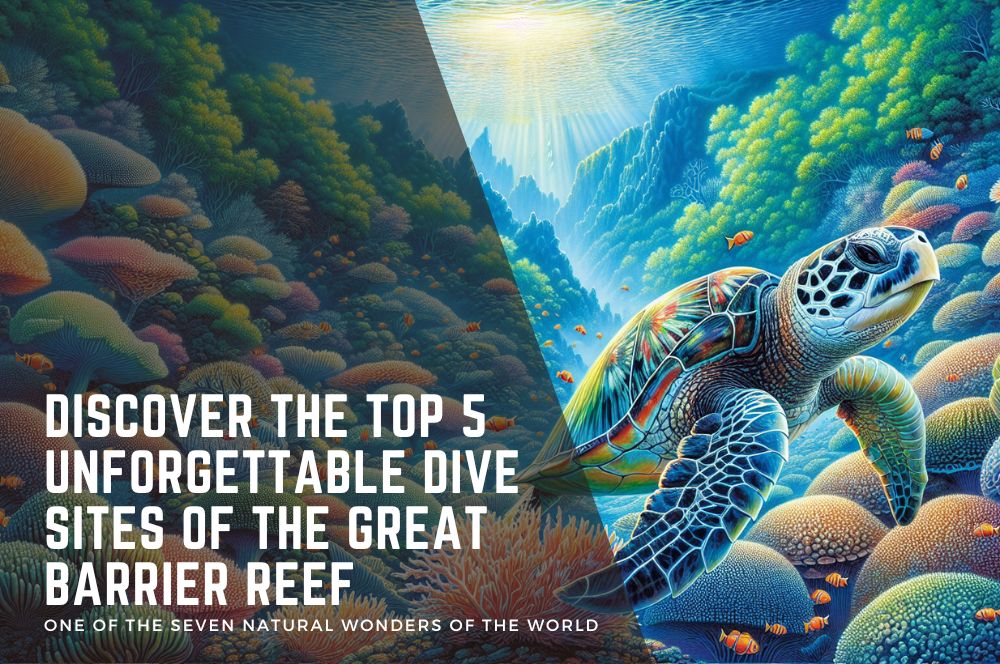
Discover the Top 5 Unforgettable Dive Sites of the Great Barrier Reef
Dive into the heart of the ocean to witness the Great Barrier Reef’s unmatched beauty. Discover the top five diving sites of the Great Barrier Reef, each offering a unique view into the reef’s rich marine life and vibrant habitats. Without spoiling the sense of amazement, this guide articulates what makes each site noteworthy—from intimate encounters with sea turtles to the silent allure of aged shipwrecks. Prepare for an aquatic adventure that captures the soul of one of the world’s natural wonders.
Key Takeaways
-
Agincourt Reef offers diverse diving opportunities for all levels with a rich marine ecosystem, including a variety of fish species, coral types, and even a shipwreck to explore.
-
Osprey Reef provides a unique, adrenaline-fueled dive experience with clear visibility up to 90 meters and a chance to witness a shark feeding frenzy among other predatory species.
-
Lady Elliot Island is a haven for manta ray encounters, particularly from June to September, with opportunities to dive or snorkel near cleaning stations where rays interact with cleaner fish.
Exploring the Underwater Marvels of Agincourt Reef
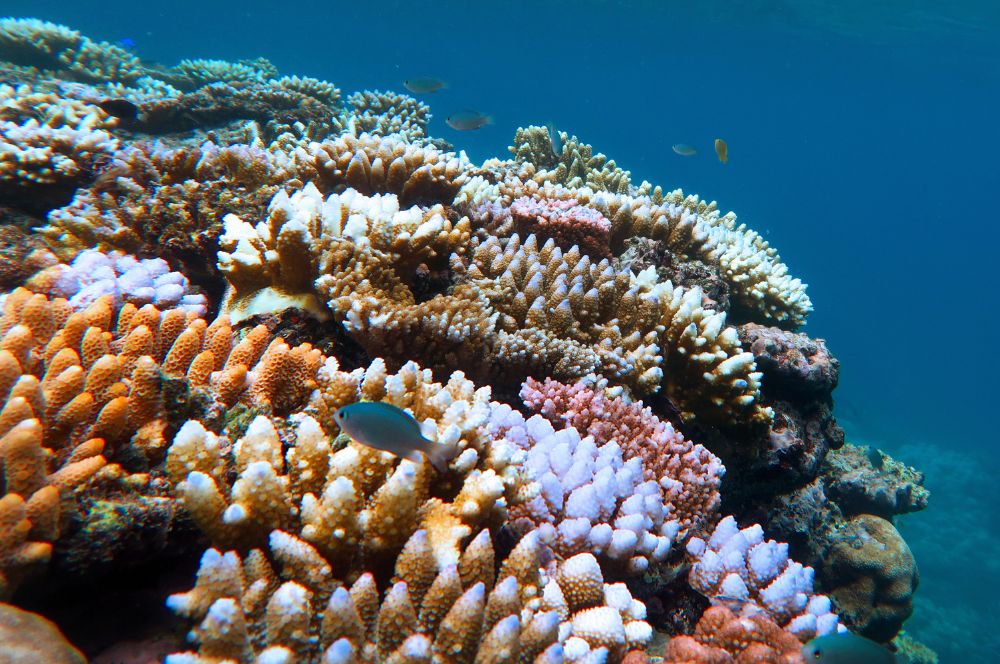
Imagine a series of five individual reefs spanning 3950 hectares in tropical north Queensland. Welcome to Agincourt Reef, located 65 kilometers east of Port Douglas. This stunning spot gives divers a chance to explore a diverse marine ecosystem, home to:
-
Potato Cod
-
Napoleon Wrasse
-
Coral Trout
-
Giant Clams
-
an old Taiwanese fishing boat wreck
Fancy a dive with the Malabar Cod and Maori Wrasse? Head to Castle Rock, nestled at the southern end of Agincourt Reef, where clear waters beckon.
Whether you’re a beginner or an experienced diver, Agincourt Reef has got you covered. Its varied depths, ranging from shallow waters to 30 meters, provide suitable diving conditions for all. And if you’re more into snorkeling, the clear visibility near the reef’s edge offers stunning underwater scenery.
The Coral Gardens
Step into the Coral Gardens at Agincourt Reef, and you’ll be greeted by a vibrant array of corals. From intricate staghorn to massive boulder varieties, they form an awe-inspiring underwater landscape. This aquatic wonderland hosts an array of tropical reef fish including:
-
Parrotfish
-
Butterflyfish
-
Maori Wrasse
-
Rays
Then, there’s Castle Rock, nestled within The Coral Gardens. Offering diverse diving opportunities, it caters to everyone - from shallow waters ideal for snorkeling to deeper regions that attract more seasoned divers. Imagine floating amidst the colorful corals, surrounded by the bustling marine life - truly a dream come true!
Dive with the Turtles
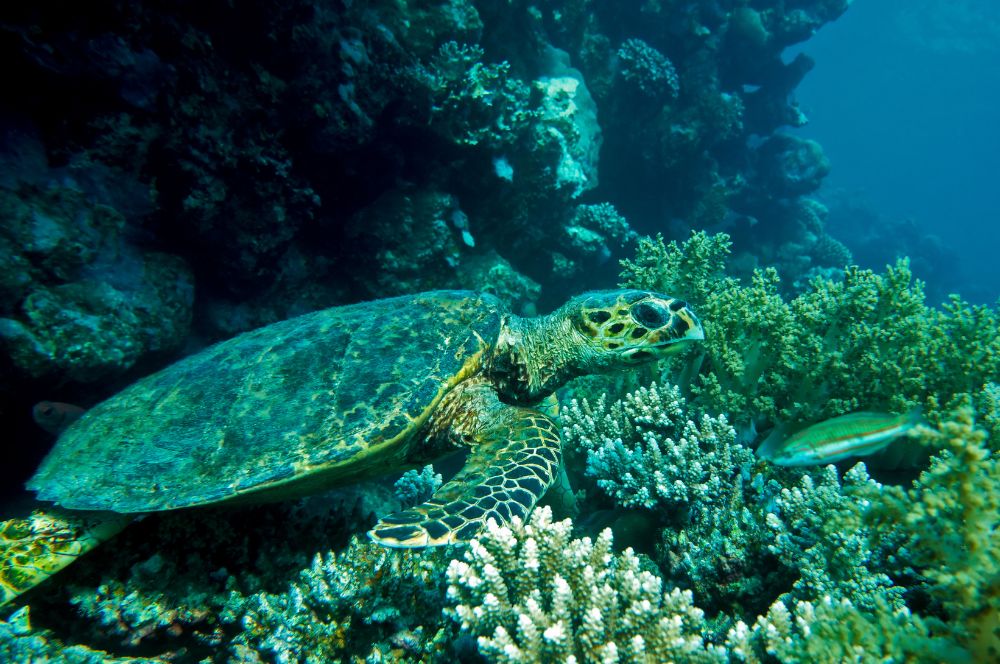
Picture this - you’re on a dive, and suddenly a Loggerhead Turtle glides past you. Exciting, isn’t it? Welcome to Turtle Bay, a renowned dive site at Agincourt Reef, popular for sightings of these majestic creatures.
But Loggerhead Turtles aren’t the only marine creatures you’ll encounter at Turtle Bay. Watch out for the Sea Cucumbers, Red Bass, Giant Clams, and even sea turtles that call this underwater haven home. A dive here is sure to be an unforgettable experience, filled with the wonders of the ocean.
Encounter Predatory Elegance at Osprey Reef
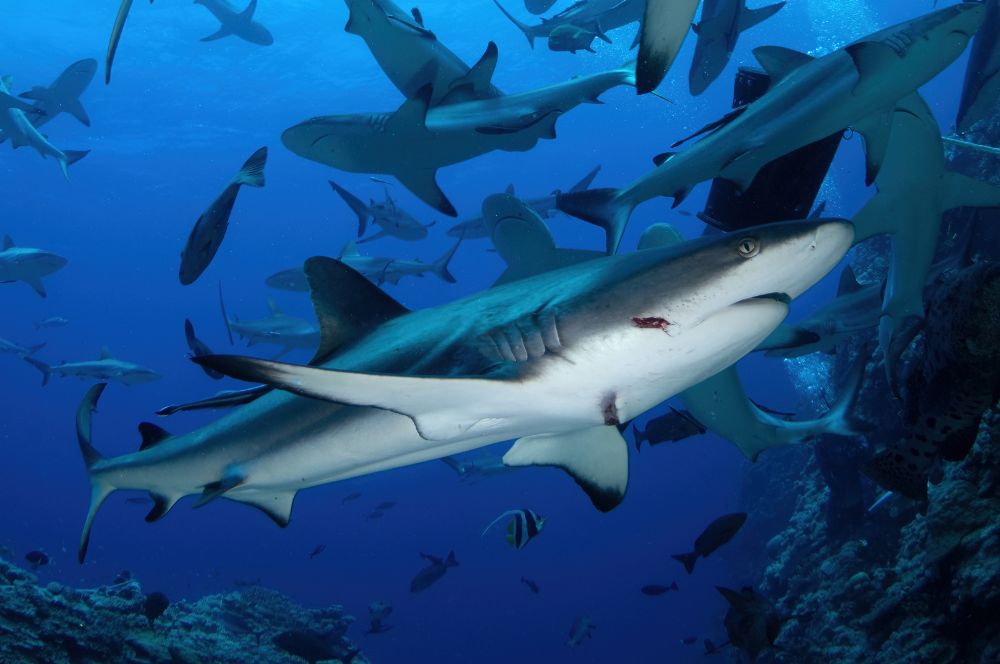
Ready for a scuba dive that’s a little more adrenaline-inducing? Venture 300 kilometers from Cairns to Osprey Reef, an isolated seamount in the Coral Sea Marine Park, located beyond Australia’s Great Barrier Reef. This spot offers extraordinary remote diving opportunities at one of the most thrilling dive sites, complete with dramatic underwater topography like vertical walls, drop-offs, and swim-throughs, all set within the stunning backdrop of a barrier reef. Embark on one of the most unforgettable dive trips of your life as you explore the depths of Osprey Reef.
What sets Osprey Reef apart is its clear visibility, which can reach an exceptional 90 meters. This, combined with the thrilling shark feed dive at North Horn’s ‘shark stadium’, offers divers a unique encounter with apex predators, epitomizing the predatory elegance that Osprey Reef is famed for.
Shark Feeding Frenzy
Fasten your seatbelts, we’re heading to North Horn, the northernmost point of Osprey Reef. Here, you can witness the shark feeding frenzy, an event that’s as captivating as it sounds. During the frenzy, sharks swim rapidly around a bait can, bashing into it until tuna heads are released, sending them into a heightened state of activity.
Osprey Reef is home to a variety of shark species including grey reef sharks, as well as:
-
Grey reef whaler sharks
-
White tip reef sharks
-
Silvertip sharks (if you’re lucky)
-
Scalloped hammerhead sharks (during the cooler months)
It’s indeed a diverse shark diving experience you won’t forget anytime soon!
Manta Ray Ballet at Lady Elliot Island
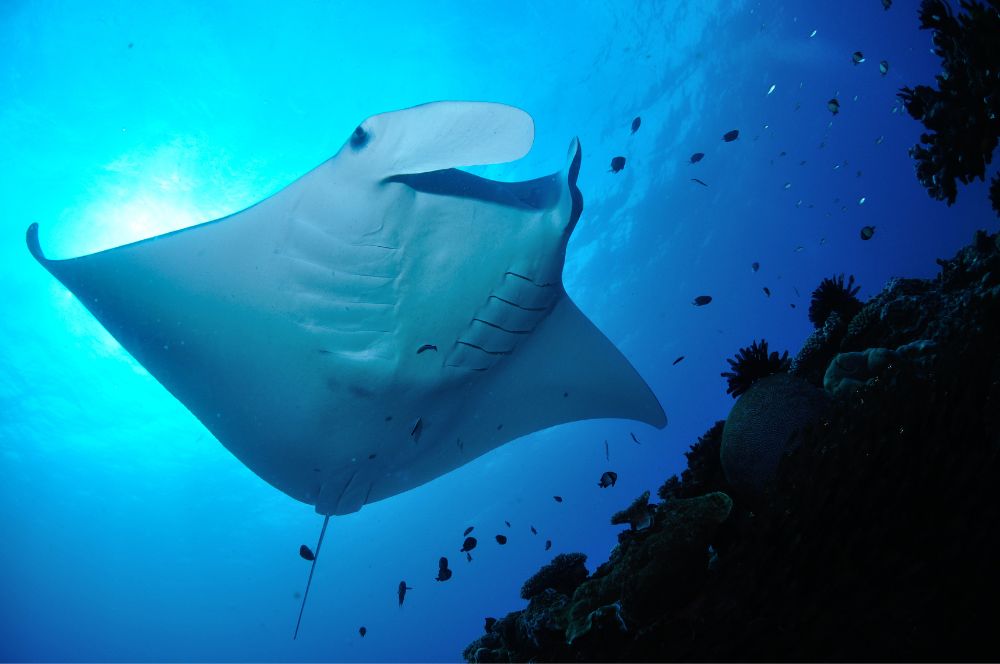
Leaving the exhilarating shark encounters behind, let’s glide into a tranquil ballet of Manta Rays at Lady Elliot Island. Recognized by PADI as one of the top 12 locations worldwide for diving with manta rays, this island accounts for 70% of all manta ray sightings on the East coast of Australia.
The best time to witness this spectacle? Winter months, from June until September. Thanks to the Capricorn Eddy, nutrient-rich waters are brought to Lady Elliot Island, enhancing manta ray sightings. Whether you’re a competent snorkeler or a diver, you can observe manta rays from the surface, provided you adhere to safety guidelines.
Cleaning Stations
Now, let’s dive a bit deeper into the underwater world of manta rays. At cleaning stations, manta rays line up for cleaner fish to remove parasites and dead skin. Witnessing this unique behavior offers a vantage point like no other for divers and advanced snorkelers.
Scuba diving sessions at Lady Elliot Island include briefings on the respectful encounter of manta rays at these underwater cleaning locales. Divers are instructed to stay calm and maintain a non-intrusive distance from the manta rays, allowing for an undisturbed observation as they are being cleaned. By staying close to the sea floor and monitoring their bubbles, scuba divers can observe manta rays at cleaning stations around large bommies without causing disturbance.
Wreck Diving Adventure at SS Yongala
Imagine diving into history. The SS Yongala, Australia’s largest and most intact historic shipwreck, offers just that. Now serving as a home to a spectacular array of marine life, including giant groupers and pelagic fish, the SS Yongala offers an underwater excursion around a century-old sunken steam ship.
A short 30-minute boat journey takes you to this extraordinary wreck site, utilizing a purpose-built dive boat capable of 25 knots. Yongala Dive at Alva Beach, Ayr, offers inclusive day trip packages with 2 boat dives, a historical briefing on the Yongala, and the guidance of qualified and experienced divers.
A Century-Old Underwater Mystery
What’s a wreck dive without a bit of mystery? The SS Yongala sank on 23 March 1911 with 122 passengers onboard. Undiscovered for nearly half a century, the shipwreck of the SS Yongala still holds many unanswered questions.
To this day, the exact reasons why the SS Yongala sank remain a mystery. As you explore the wreck, you’re not just diving into the ocean, but also into a century-old mystery.
Art Meets Ocean at the Museum of Underwater Art
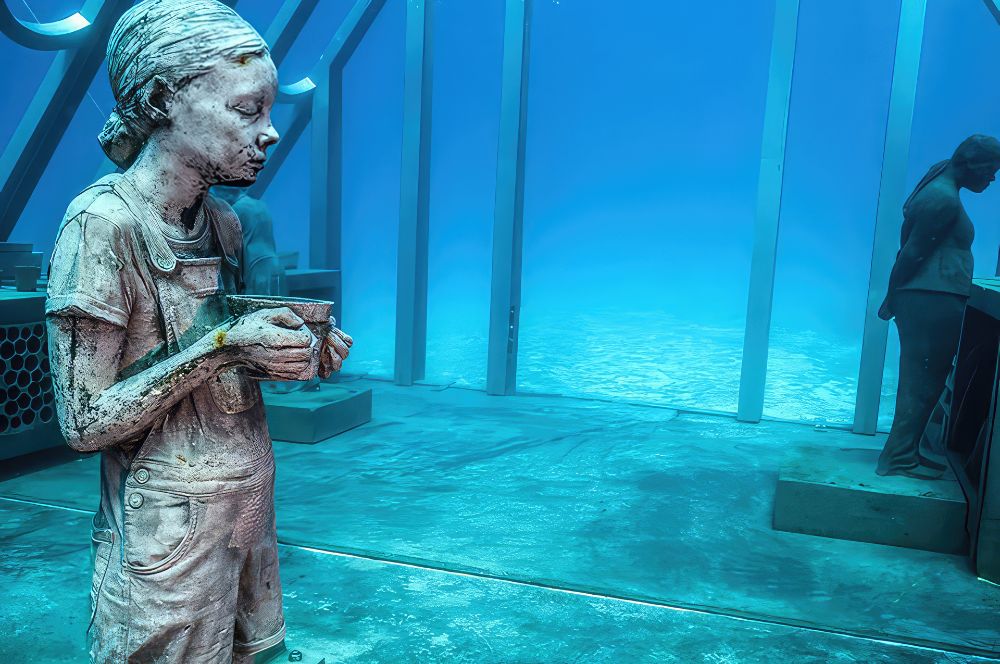
Where does art meet the ocean? The answer lies in the Museum of Underwater Art. This unique spot boasts underwater installations like the Coral Greenhouse and features additional art pieces promoting ocean conservation. Visitors can engage in snorkeling or scuba diving to experience these installations, including the Coral Greenhouse, a 9m (30ft) stainless steel structure designed to dissipate ocean currents.
The museum advocates for a no touching policy to preserve the artworks and foster the natural accumulation of marine life. As you marvel at the installations, remember - you’re not just exploring art, but also fostering ocean conservation.
The Coral Greenhouse
Step into the Coral Greenhouse, a feature of the Museum of Underwater Art. This structure serves as a living habitat for various marine species. Over time, coral and other marine organisms have started to naturally colonize the Coral Greenhouse.
As you dive around this surreal underwater environment, remember - it’s more than just a structure, it’s a living, evolving entity, fostering life beneath the waves.
Summary
From the vibrant underwater landscapes of Agincourt Reef and the thrilling shark encounters at Osprey Reef to the serene manta ray ballet at Lady Elliot Island, the historic SS Yongala wreck dive, and the unique underwater art installations, the Great Barrier Reef truly offers an unforgettable diving experience. Each dive site has its unique charm, offering a fascinating glimpse into the world beneath the waves. So, what are you waiting for? Put on your diving gear and plunge into this underwater paradise!
Frequently Asked Questions
What can I see at Agincourt Reef?
You can see a diverse marine ecosystem at Agincourt Reef, including Potato Cod, Moray Eels, Napoleon Wrasse, Coral Trout, Giant Clams, and even an old Taiwanese fishing boat wreck. Additionally, Loggerhead Turtles can be spotted at Turtle Bay. Enjoy your visit!
What makes the Osprey Reef unique?
Osprey Reef is unique due to its dramatic underwater topography, excellent visibility, and exciting shark feed dive experience at North Horn's 'shark stadium.' This makes it a must-visit for diving enthusiasts.
When is the best time to see manta rays at Lady Elliot Island?
The best time to see manta rays at Lady Elliot Island is from June to September, during the winter months. You'll have a great chance of spotting them during this time!
What is the SS Yongala?
The SS Yongala is Australia's largest and most intact historic shipwreck, serving as a home to a wide variety of marine life.
What is the Museum of Underwater Art?
The Museum of Underwater Art is a fascinating place with installations promoting ocean conservation, including the Coral Greenhouse, a living habitat for marine species. It's a must-see for anyone interested in art and marine life.
Recent Posts






